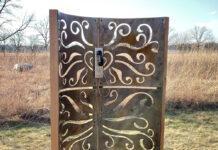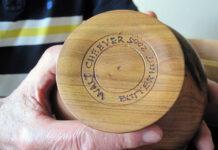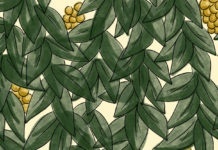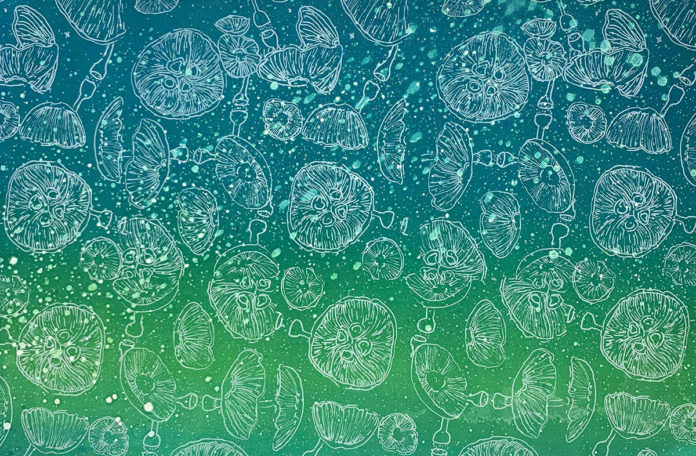
[Submitted Featured Image – Wardah Sabrie said she was inspired to create a jellyfish print in honor of her grandfather, who passed away from Alzheimer’s, after she heard about Alzheimer’s research being conducted on jellyfish.]
For Wardah Sabrie, her art is a way to express her identity—and there are many facets to her identity: A young woman. A black woman. An immigrant. A student. A daughter. A sister. A Muslim. An artist.
Her artistic medium of choice is printmaking, a painstakingly detailed process that can take days, weeks or even longer. Her artwork is vivid, whether in black-and-white or in color, with clear-cut lines and bright patterns. You may have seen her work in places such as Pub 500 or J’s Sambusa (which is owned by her aunt, Nasra “Jamila” Ibrahim). Most recently, it has been displayed at The Blue Boat, where it is also available for purchase.
It’s okay to do what you love. I just want somebody to be influenced [by my art] and think, ‘Hey, you can be an artist.’Wardah Sabrie
There are times when some of Sabrie’s identities may seem at odds, or at least be difficult to reconcile. She explained that in her home culture in Kenya, being an artist is not always encouraged, because there is more emphasis on finding a stable career. But Sabrie has found a way to embrace all parts of her identity and still pursue her passion.
“In our culture, it’s not very popular to be an artist; you need efficiency, like being a nurse or a doctor or something in IT,” she said. “But I’m doing [art] because I love it. I want my community to see it that way. It’s okay to do what you love. I just want somebody to be influenced [by my art] and think, ‘Hey, you can be an artist.’”
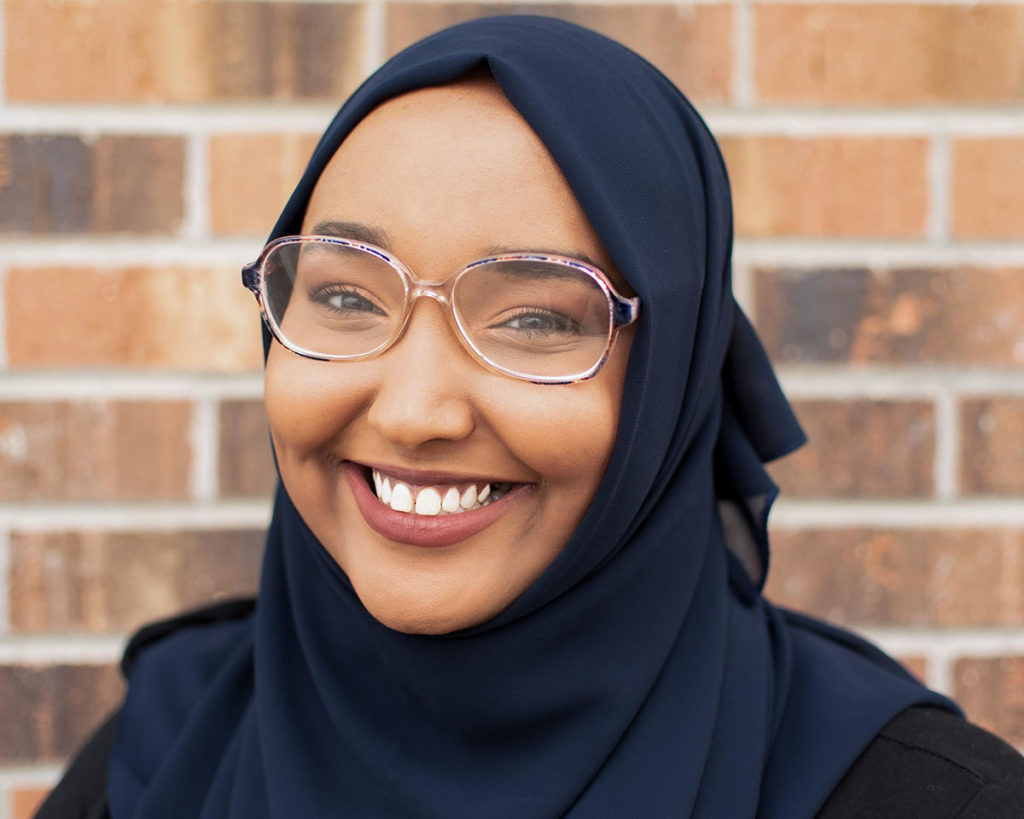
A difficult adjustment
Sabrie was born in Nairobi, Kenya in 1995 and said she has been creating art as long as she can remember. She first started with pencil drawings, using them as a way to relieve stress and help manage her anxiety. Eventually, she branched into anime styles, recreating what she saw on television shows.
“I [was] always drawing something,” Sabrie said. “For me, it was relieving stress. You know how people exercise to feel better? I did drawings.”
Sabrie eventually moved to Ethiopia with her family, living there until she was nine. Then, in 2004, her father decided to move with her and her sister to the United States, where they could have a better education. He had already spent time in the U.S. and had family, such as Ibrahim, in the country.
I want other people to be inspired and be like, ‘If she went through all these horrible things, I can be fine, and I can step up and believe in myself.’Wardah Sabrie
Sabrie and her family first settled in Atlanta, Georgia. She said that her time in Georgia was difficult, since she was often bullied for being a minority. She was pushed and hit by basketballs by other students, and she was even thrown down the stairs at one point.
“When I first came to America, I absolutely hated it,” she said. “It was horrible. I was getting bullied every day, [and] I didn’t understand English. Every day, I’d cry before school. I had so much anxiety. I wanted to do as best I could, but I couldn’t, because [I didn’t know] the language.”
Despite how difficult it was for Sabrie to adjust to life in Georgia, she said her experiences helped her grow into a stronger person.
“It makes you stronger, because you went through something tough,” she said. “It gives you a tough skin. It influences the work I do [as an artist]. I’m all about standing up for yourself and being independent and being positive and doing what you need to do. That’s what I want to do for myself. I want to be more positive in my life, and I want to be more independent… I want other people to be inspired and be like, ‘If she went through all these horrible things, I can be fine, and I can step up and believe in myself.’ For a long time, I [didn’t] believe in myself, [but now I see] how you need to take care of yourself, be focused and be comfortable with your own self and identity.”
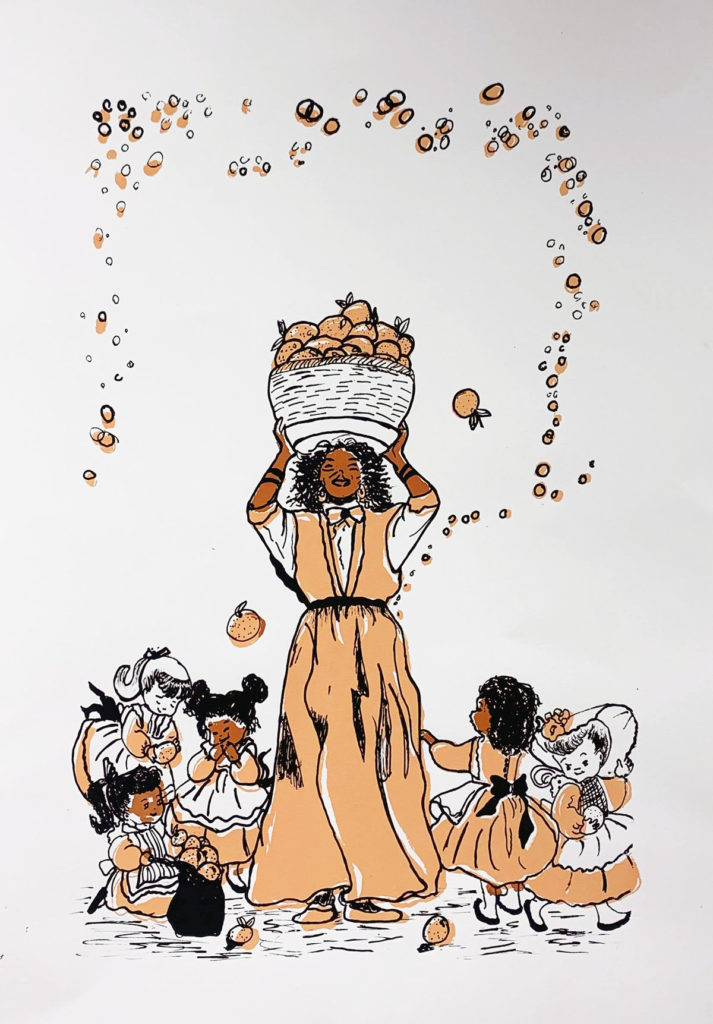
Moving to Minnesota
In 2008, Sabrie and her family moved to Minnesota in search of “better people and less pollution.” She said that she likes her new state much more than Georgia, since there is a bigger sense of community and people are friendlier. There was also a more visible immigrant and refugee population, which seemed to be more welcomed than in her previous home.
“In Atlanta, I was the only one with a headscarf,” Sabrie explained. “Nobody had a scarf on. But when I came here, there were so many Somali girls [with headscarves]. I thought, ‘Why am I seeing so many of me around?’ It was a lot more welcoming in terms of that. People are nicer up here. If you walk around, people say, ‘Hi, how’s your day?’ In Atlanta, you never talk to strangers.”
In Atlanta, I was the only one with a headscarf. But when I came here, there were so many Somali girls [with headscarves]. I thought, ‘Why am I seeing so many of me around?’Wardah Sabrie
When Sabrie graduated Mankato East High School in 2014, she started attending classes at South Central College. She said she was interested in pursuing her passion for art more seriously, but she was afraid it would be too difficult to find a stable profession. Instead, she figured she’d just continue with her art as a hobby—until her professor, Michelle Johnson, encouraged her to let herself follow her dreams.
“I didn’t think I could do art like a job, [since] you don’t really get that much money,” Sabrie said. “I was like, ‘Oh, it’s side hobby…’ But [Michelle] said, ‘You should consider doing it full time, because you’re really good.’ So I thought, ‘I’ll try.’”
Sabrie started taking art classes at South Central College, and Johnson eventually encouraged her to move on to Minnesota State University, Mankato for a more through art experience. Sabrie started taking classes at MSU-Mankato in 2017 after finishing her general electives at SCC.
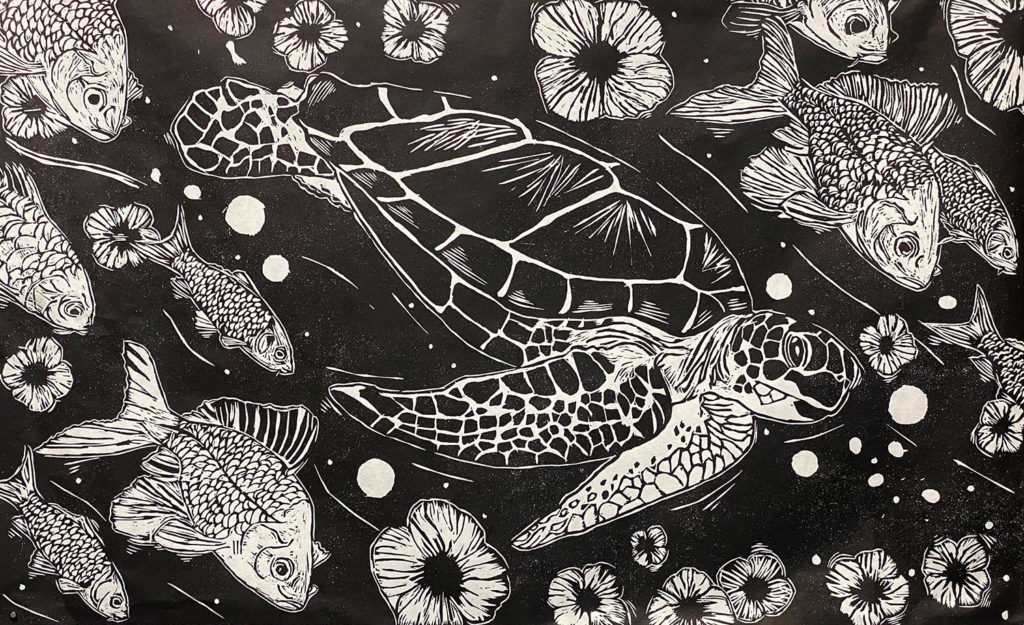
Discovering a new love
It was at MSU-Mankato that Sabrie discovered the art of printmaking, a process where art is created by printing an original creation. Techniques include woodcutting, etching, engraving and lithography, as well as the more modern technique of screen-printing.
According to Sabrie, one printmaking class was all it took. After the class, she switched her major to printmaking.
“I took a printmaking class and really loved it,” she said. “The reason I like it is you can do so many things. There’s woodcut, where you carve the wood, and Intaglio, where you etch the plates. There’s silk screening, [which is used to] print shirts and fabrics. Printmaking is more hands-on than anything else. It’s a lot of labor, but you can produce a lot.”
Sabrie graduated from MSU-Mankato in 2019, then continued in her studies by pursuing a master’s degree in printmaking at the same university. She juggles her time between her classes and her work as a teaching assistant, and she plans to graduate in two years.
My dream is that I just want to be hired, so I can make as much work as possible.Wardah Sabrie
Sabrie has already displayed her work at several locations, including events such as MSU-Mankato’s “Somali Night” and on the walls of her former high school. When Julie Johnson Fahrforth, the owner of The Blue Boat, approached Sabrie’s father, Mankato School Board member Abdi Sabrie, about showcasing more ethnic artists, he was quick to suggest his daughter.
“I showed her some of my work, and she really liked it,” Sabrie recalled, adding that her work has been hanging at The Blue Boat since this summer.
After graduation, Sabrie isn’t sure what will come next. She mostly just hopes that someone will hire her and enable her to keep working on her passion.
“It’s hard when it comes to printmaking, because the materials are very expensive,” she explained. “My dream is that I just want to be hired, so I can make as much work as possible.”

